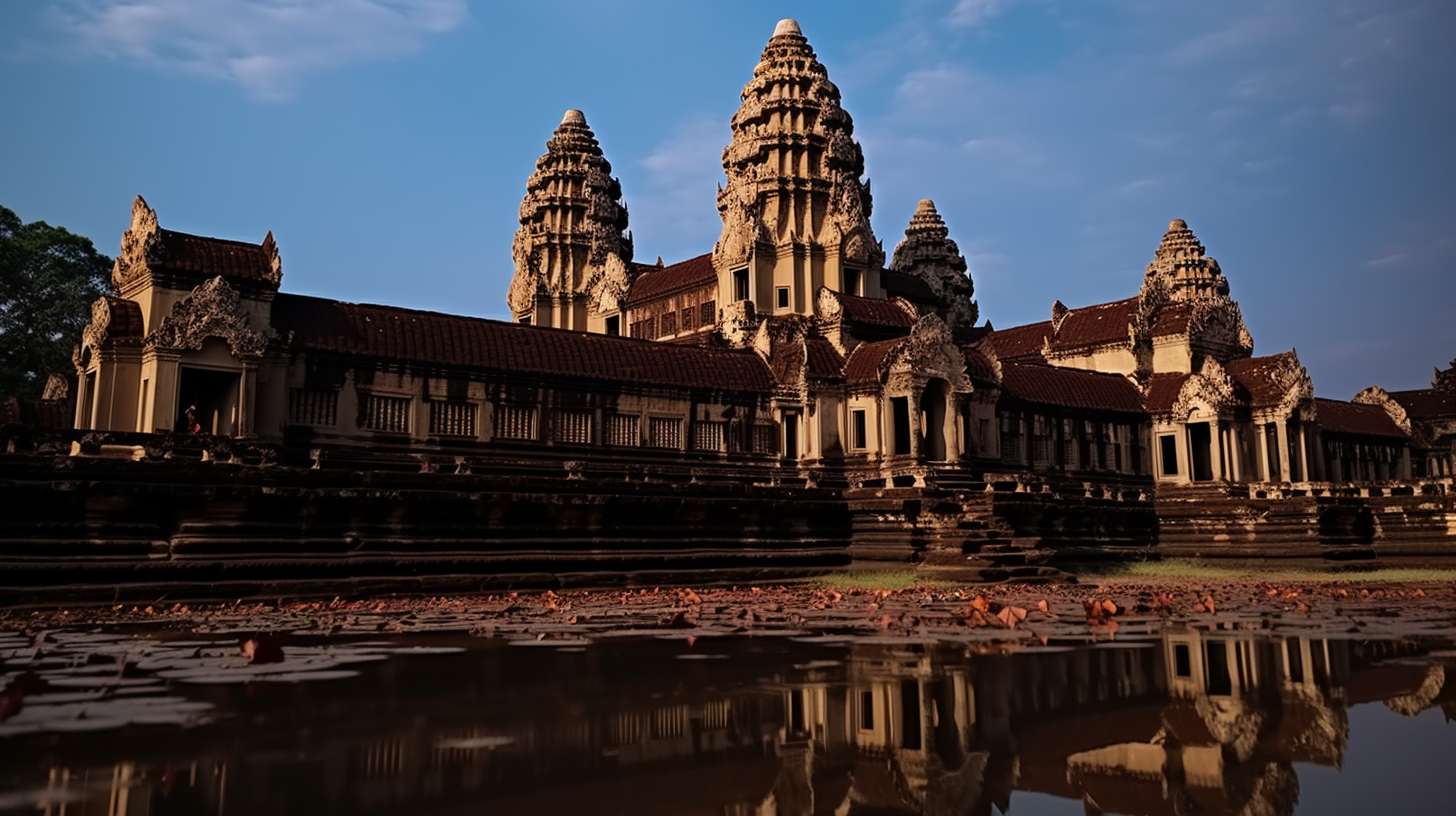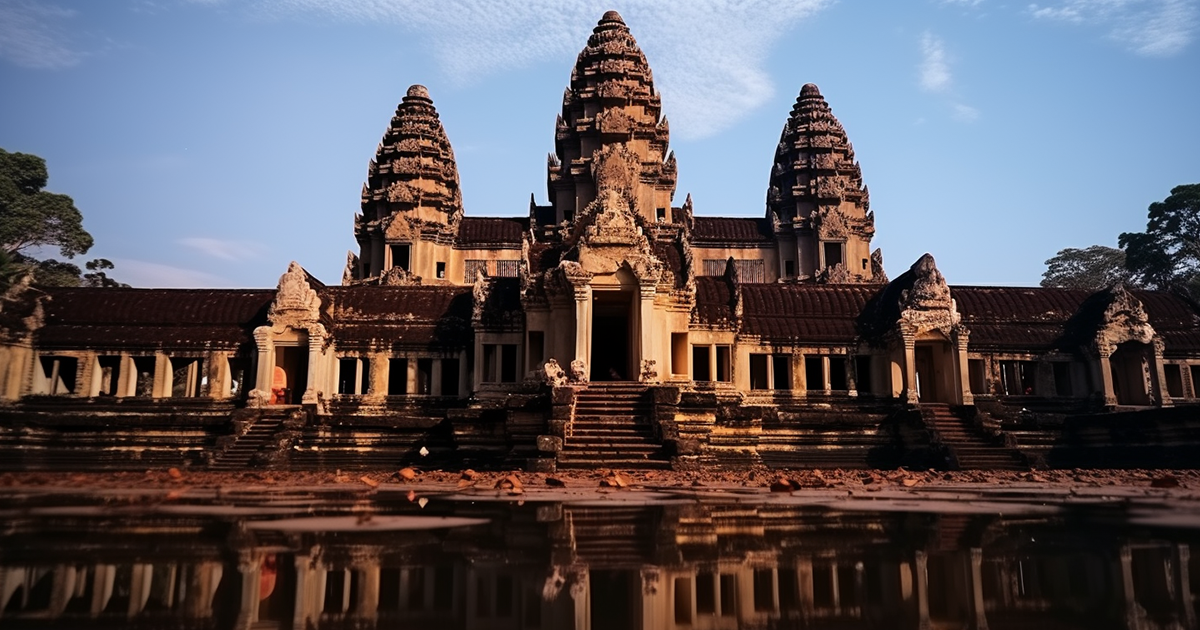Deep in the heart of Cambodia, on the outskirts of Siem Reap, stands Angkor Wat – a monumental edifice that has long entranced the minds of historians, archaeologists, and mythologists. This vast temple complex, stretching almost a mile on each side, has been a source of fascination and marvel for generations.
The prevailing view among archaeologists places its inception in the 12th century A.D., yet Cambodian folklore traces its origins back even further, to 600 B.C.
According to local legends, Angkor Wat was not solely the handiwork of mortals but was crafted by a being that straddled the realms of man and divinity.
Per the legend, Priya Pisnakar, the mother of the architect, hailed from a celestial realm beyond our world and sought to reunite with her son in her otherworldly abode. While this tale captivates, it is merely one of many enigmas shrouding Angkor Wat.

In 1996, John Grigsby, a researcher and author, stumbled upon a remarkable alignment within Angkor Wat that has left experts and enthusiasts astounded. Grigsby’s revelation unveiled a striking correlation between Angkor Wat and the Draco constellation, named for the Latin term for “dragon.”
By overlaying a map of the Draco constellation onto Angkor Wat’s layout, Grigsby revealed that various structures within the temple complex perfectly aligned with the primary stars of the Draco constellation.
The natural query arises: what purpose could this cosmic alignment serve? Why did the builders of Angkor Wat go to such great lengths to reflect the Draco constellation?
Some scholars theorize that this alignment acted as a symbolic gesture, showcasing to the local populace the celestial lineage of their creators and mentors. Constructing a monumental edifice mirroring their stellar origins would vividly communicate their extraterrestrial heritage.
The link between Angkor Wat and the Draco constellation extends beyond architectural alignment. The temple features depictions of dragon-like creatures, hinting at a profound association between Angkor Wat and the Draco constellation. In South Asian traditions, these creatures, known as nagas, hold significant symbolism.

Regarded as potent entities, shape-shifters, and bearers of wisdom and knowledge, these nagas may symbolize the inhabitants of the Draco constellation or advanced extraterrestrial entities.
Adding to the intrigue of this celestial correlation is that Angkor Wat is not the sole ancient site linked to Draco. Across the world, in Ohio, the Native American Serpent Mound aligns directly with Draco.
Similarly, in ancient Egypt, the pyramids were positioned so that the entrance aligned with the key star of Draco, Alva Draconis, ensuring its visibility during nocturnal hours. These alignments hint at the captivating possibility that the Draco constellation influenced the development of dragon folklore across diverse cultures.
The prevalence of dragon myths worldwide has spurred conjecture that these mythical beings may have been extraterrestrial visitors hailing from a planet within the Draco constellation. This thought-provoking theory posits that ancient civilizations bore witness to their arrival, immortalizing them in their myths and legends.
Watch the video below:
As we delve into these ancient enigmas, we are prompted to contemplate whether esoteric knowledge regarding our cosmic origins has always nestled within humanity’s collective consciousness. Could it be that our fascination with celestial alignments and dragons is an echo of this ancient wisdom?
While unraveling the secrets of Angkor Wat and its tie to the Draco constellation may remain elusive, it unequivocally stands as a testament to the enduring allure of ancient riddles that continue to captivate our imagination.
